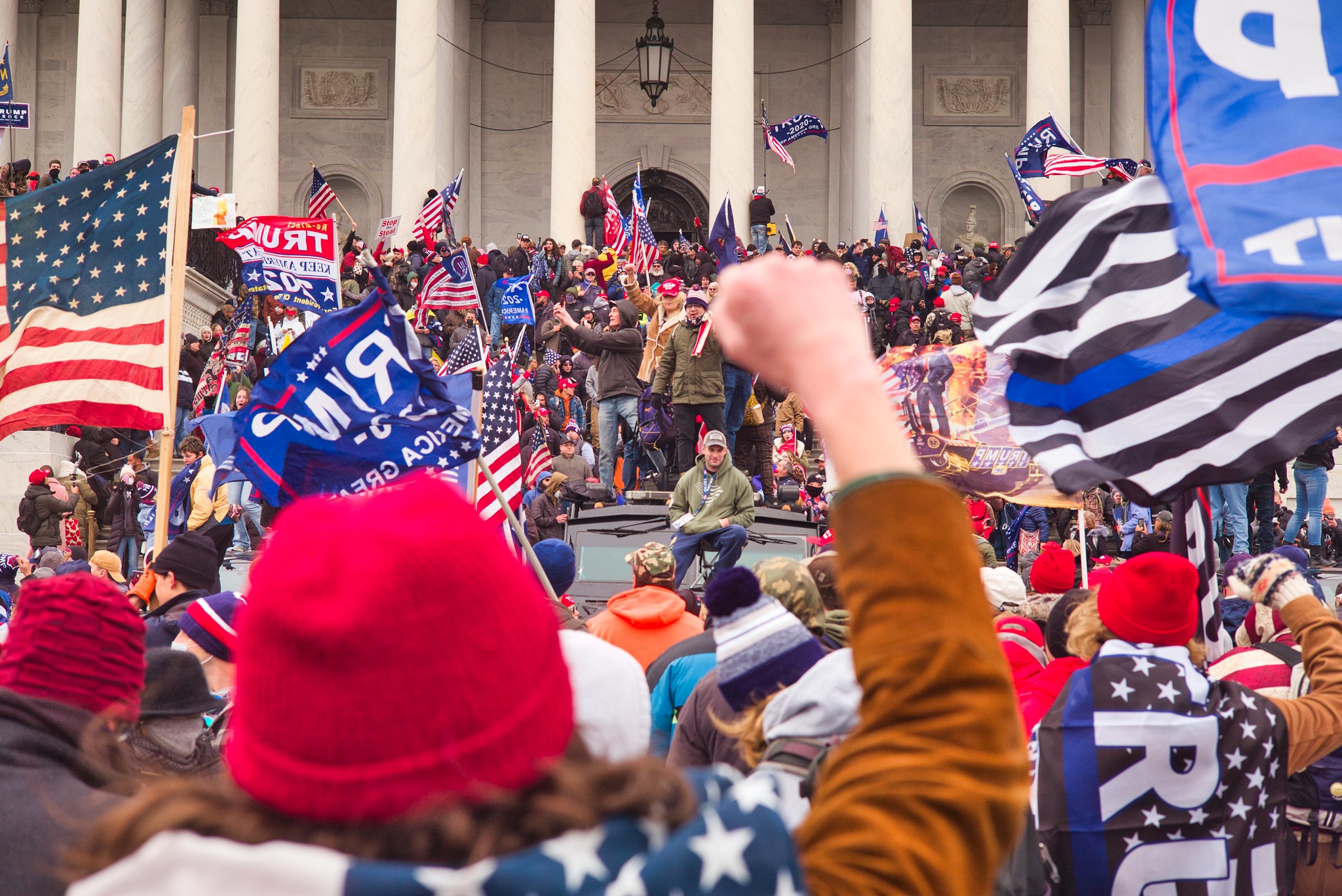What to Read While Waiting for a Potential Trump Indictment
.jpeg?sfvrsn=a5483b0_5)
Published by The Lawfare Institute
in Cooperation With

On July 18, former President Donald Trump announced on Truth Social that he had received a target letter from Special Counsel Jack Smith in the Jan. 6 investigation. Further reporting on the target letter—Trump's receipt of which signals that a criminal indictment is likely to come soon—has revealed three statutes likely to be invoked in criminal charges brought against him: conspiracy to commit offense or to defraud United States (18 U.S.C. § 371); corruptly obstructing an official proceeding (18 U.S.C. § 1512(c)(2)); and conspiracy against rights (18 U.S.C. § 241).
These potential charges are a part of the Justice Department’s Jan. 6 investigation, which it opened in 2021 and has become one of the Justice Department’s most wide-ranging probes yet. It implicates not just the former president, but hundreds of insurrectionists and leaders of the effort to stop a peaceful transfer of power in an attack on the U.S. Capitol.
Though we can’t be sure of the statutes under which Trump may be charged until the indictment is released and unsealed, in the meantime, Lawfare’s past coverage can help readers familiarize themselves with § 371, § 1512, and § 241. And though we don’t yet know the alleged fact pattern without seeing the indictment, this Lawfare piece from March 2022 outlines what a Trump indictment might look like based on information known at the time. On March 2, 2022, the House Select Committee to Investigate the Jan. 6 Attack on the Capitol filed a brief in federal court in Santa Ana, California stating that “evidence and information available to the Committee establishes a good-faith belief that [former President] Trump and others may have engaged in criminal and/or fraudulent acts.” The brief laid out evidence suggesting Trump had violated § 371 and § 1512(c)(2)—two of the three statutes likely to end up in an indictment to come.
A § 371 charge entails conspiracy to commit offense or to defraud the U.S. and criminalizes individuals’ actions that may seek to “impair[], obstruct[] or defeat[] the lawful function of any department of government” (Hammerschmidt v. United States). The statute holds different requirements for offense and fraud charges—while both need elements of conspiracy (an illegal agreement, criminal intent, and proof of an overt act), there doesn’t need to be a charge for an underlying crime in order to charge someone with conspiracy to defraud.
This statute appeared in 2018 when Special Counsel Robert Mueller indicted 13 Russian nationals with conspiracy to defraud the United States for their attempts to interfere with the results of the 2016 presidential election. You can read about that here.
The House select committee, which wrapped up its separate investigation of the Jan. 6 attack at the end of 2022, made recommendations to the Justice Department for two criminal referrals of Trump invoking § 371: conspiracy to defraud the U.S. government and conspiracy to make false statements (the latter referral also included 18 U.S.C. § 1001). (It also referred Kenneth Chesebro, Jeffrey Clark, John Eastman, Rudy Guiliani, and Mark Meadows for conspiracy to defraud and Eastman and Chesebro for conspiracy to make false statements.)
A second potential charge, obstruction of an official proceeding (§ 1512(c)(2)), falls under the broader witness, victim, or informant tampering statute. We’ve seen § 1512(c)(2) in the context of Jan. 6 litigation before—Senior Editor Roger Parloff described it as the Justice Department’s “go-to felony charge” in these cases. Of the nearly 1,000 insurrectionists who have been charged with federal crimes related to Jan. 6, at least 308 have been charged under § 1512(c)(2), and 70 of them have already been convicted. With a maximum penalty of 20 years in prison, § 1512(c)(2) is the stiffest charge prosecutors have leveled against Jan. 6 insurrectionists. There have been some challenges surrounding these §1512(c)(2) charges, but for now the D.C. Circuit has upheld the most recent decisions surrounding them. Legal Fellow Saraphin Dhanani and Executive Editor Natalie Orpett also discussed the statute in the context of United States v. Fischer on the Lawfare Podcast.
The select committee also referred Trump—along with Clark, Eastman, and Chesebro—for charges under §§ 1512(c)(2) and (k) to the Justice Department at the conclusion of its investigation.
A third likely charge discussed in the target letter, § 241, has struck many as the most surprising. The statute makes it a crime for individuals to “conspire to injure, oppress, threaten, or intimidate any person in any State, Territory, Commonwealth, Possession, or District in the free exercise or enjoyment of any right or privilege secured to him.”
Past Lawfare coverage on § 241 includes Quinta Jurecic’s Jan. 2021 article on “Ricky Vaughn,” one of the most prolific far-right Twitter users spreading disinformation during the 2016 election cycle. The Justice Department charged Douglass Mackey, Vaughn’s real name, under § 241, alleging at the time that some of Mackey’s tweets constituted illegal voter suppression, what the Justice Department described as “misinformation designed to deprive individuals of their constitutional right to vote.” Jurecic writes:
The statute originated in the Enforcement Act of 1870, also known as the Ku Klux Klan Act—Reconstruction-era legislation passed in response to a campaign of Klan violence aimed at keeping Black Americans from the polls. Deuel Ross, senior counsel at the NAACP Legal Defense Fund, explained that Mackey’s prosecution under § 241 is a “natural outgrowth of the original intent of these criminal statutes.” But, he said, this may well be the first instance in which the Justice Department has brought criminal civil rights charges for the distribution of voting disinformation over social media, whether under § 241 or Section 11 of the Voting Rights Act.
Jurecic expanded on the Mackey case earlier today, flagging aspects of the Mackey case, including a ruling against Mackey’s motion to dismiss, that may be relevant to a Trump prosecution:
Mackey argued that he’d lacked “fair warning” that his conduct was illegal under § 241, because no prior prosecution under the statute had addressed a situation exactly like his. The Justice Department didn’t buy it, writing, “simply because a defendant might use a new means to injure the constitutional rights of others to vote in an election does not mean that his conduct is beyond the reach of Section 241.” Perhaps that might also apply to an effort to interfere with the counting and certification of the 2020 electoral vote, in part by encouraging a violent mob to storm the U.S. Capitol—which would certainly be a “new means.”
Initial reporting suggested that a third statute in the target letter is 18 U.S.C. § 242, or deprivation of rights under color of law, not § 241. The key difference between the statutes is that § 241 merely requires that the defendant conspired to injure someone’s rights, whereas §242 requires that the defendant “willfully subjects” someone to “the deprivation” of such rights. Another difference between § 242 and § 241 is the “color of law” qualifier of § 242, which indicates that the defendant is a federal, state, or local official acting outside the bounds of lawful authority while purporting to act pursuant to his or her official duties. Those prosecuted under § 242 typically include law enforcement officers, but public officials can also be prosecuted with this statute.
Before the Justice Department unsealed Trump’s last indictment in the Mar-a-Lago case, Editor in Chief Benjamin Wittes offered a word of warning against premature speculation. It bears repeating here:
In the meantime, we urge caution about commentary in the absence of knowledge or documents. A great deal will be said with great confidence before anyone even knows how many pages the indictment contains. Be careful of all of it. The serious discussion will wait until anyone knows what the Justice Department has alleged and said it will prove.






